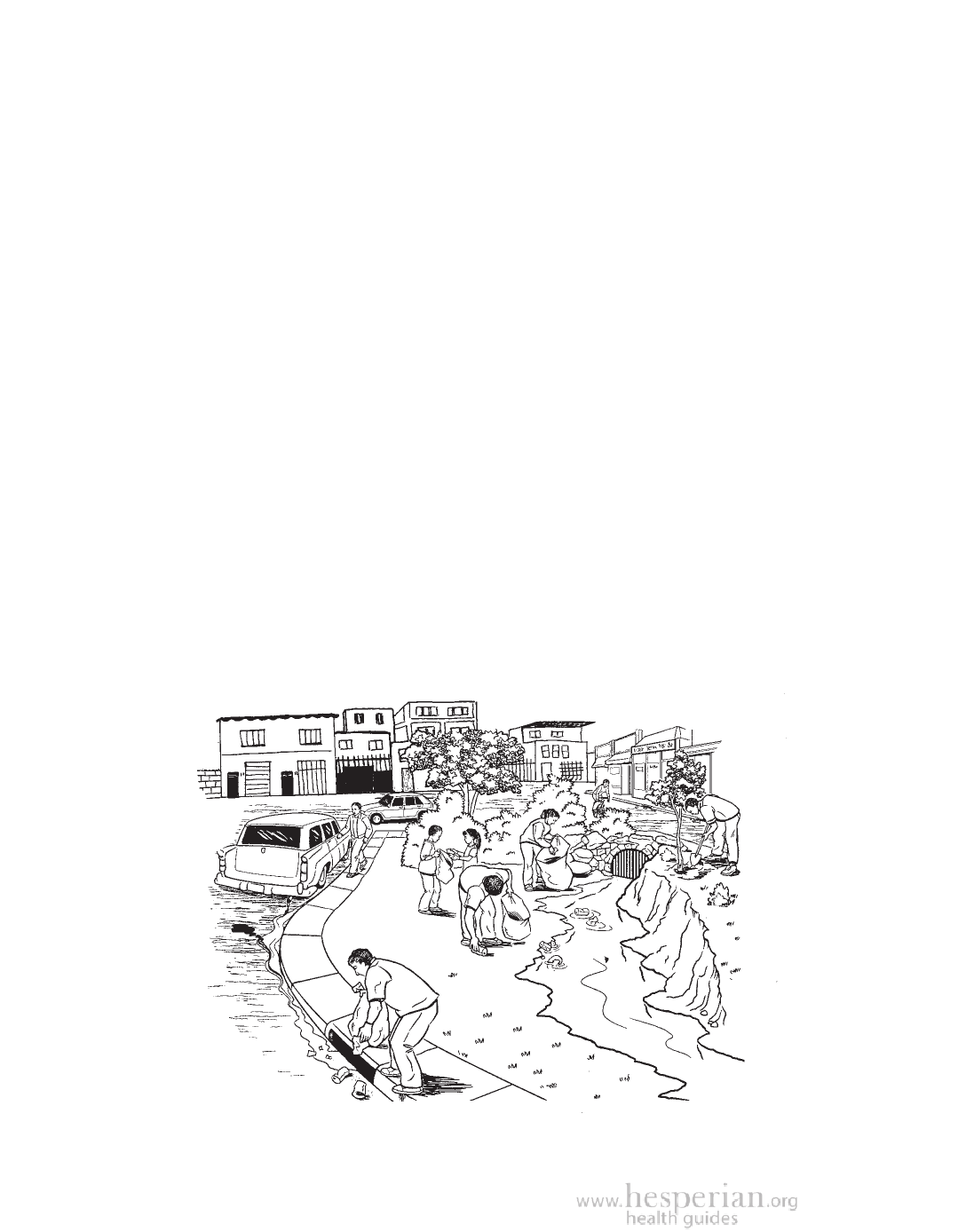
168 Protec ting Watersheds
Watersheds in towns and cities
When a town or city is built, it changes the way water flows through the
watershed. Urban development brings more hard surfaces such as roads,
pavements, and roofs that cause rainwater to run off rather than to soak into
the ground. This can cause water to collect and stagnate, providing places for
mosquitoes to breed. It may also lead to flooding.
Where people gather in large numbers and industry develops, more
pollution contaminates the water. Keeping wetlands and riverbanks healthy
in towns and cities can be difficult, but it is especially important because
wetlands prevent polluted water from collecting, contaminating plants and
animals, and damaging human health.
To protect their part of the watershed, people in towns and cities can:
• Safely dispose of human wastes and toxic chemicals to prevent them
from polluting water sources and blocking water flow (see Chapters 7, 16,
and 20).
• Restore riverbanks, streams, and wetlands as parks within the city.
Some communities plant gardens alongside roads to help water sink into
the ground, rather than drain into sewers.
• Campaign to have city governments provide safer homes for people
living in dangerous flood areas.
• Pressure businesses and industries to take responsibility for their wastes.
• Get involved through city government and civic organizations in regional
planning and sustainable development efforts.
Watersheds in cities and towns are easily contaminated, but they can be protected!
A Community Guide to Environmental Health 2012